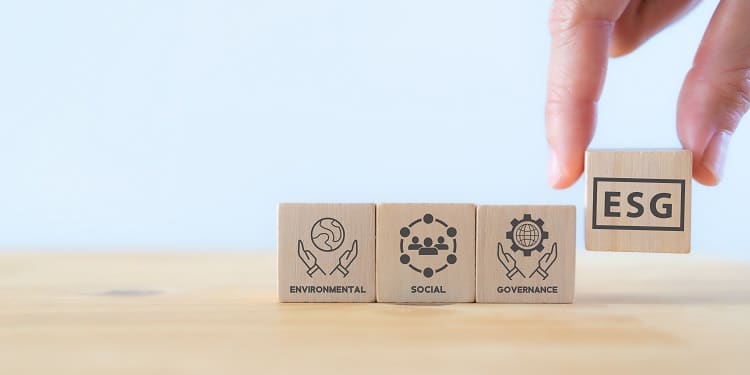
Carbon Credits Explained
Carbon credits are an instrument that helps governments to limit greenhouse gas emissions. Regulatory authorities limit various industries and states on how much carbon dioxide they can produce in a given year. Then governments and independent bodies emit credits to satisfy that limit. Every carbon credit works as an authorization to emit one ton of carbon dioxide or carbon dioxide equivalent.
This system is part of an international agreement known as the Kyoto Protocol, which would set carbon emissions for all participating countries. Credits are given to companies in a fixed number that decreases over time. If the companies’ carbon dioxide emissions fall below the predetermined limit, they can sell the extra credits to other businesses that require them to offset the damage.
These credits can be bought, sold, and traded between businesses. A company can purchase enough carbon credits to enable it to keep producing greenhouse gases up to a predetermined level. On the other hand, businesses that actively lower the quantity of carbon in the atmosphere through negative emissions (such as forestry programs) produce carbon credits that can be sold for a profit.
As in all markets, credits become more expensive when there is a greater demand for them. Therefore, companies have a tremendous incentive to save costs by reducing emissions through trading. By 2050, the globalized carbon trading market might be worth up to $22 trillion.
How to Invest In Carbon Credits
Carbon credits are part of a “cap-and-trade” system — an effective way to put a price on carbon emissions and limit them simultaneously. The rigid limits make the cap on greenhouse gas emissions, while the trading component creates a market where businesses may purchase and sell permits.
Theoretically, all businesses and individuals can freely trade carbon credits. However, things are a bit more complex in practice. Although California and a few Northeastern states have small credit programs for their power grids, the US government doesn’t implement a carbon credit system.
Things are a little more advanced in Europe, but the system is still closer to a theoretical concept than traditional trade. The European Union Emissions Trading Mechanism regulates carbon credits that can be traded in a limited market and through a government-based auction system.
It doesn’t mean you can’t invest in carbon credits. Traders and investors have three ways to get into the carbon market and build a “green” portfolio:
- Carbon-credit exchange-traded funds (ETFs)
- Carbon-credit futures
- Individual companies
Carbon credits are intangible assets sold on the market similarly to stocks and bonds, similar to financial instruments. To trade them, you need a brokerage account or an investment app.
Carbon-Credit ETFs
Carbon-credit ETFs (exchange-traded funds) are traded on an exchange, similar to stocks. They’re bought and sold on the market throughout the trading day, so their prices fluctuate.
Carbon ETFs to watch:
- KraneShares European Carbon Allowance ETF (KEUA) — gives access to the EU carbon credits through the EU Emissions Trading Scheme.
- KraneShares Global Carbon ETF (KRBN) — covers the three main compliance markets (EU ETS carbon credits, California’s CCA carbon credits, and the northeastern US RGGI carbon credits), but its composition favors European Union allowances. It gives investors good exposure to the development of the carbon markets with less risk and volatility than most carbon credit futures ETFs.
- iShares MSCI ACWI Low Carbon Target ETF (CRBN) — consists of holdings made up of more than 1,000 low-carbon businesses worldwide, including tech giants like Apple, Microsoft, and Amazon. Thanks to its extensive diversification, it is considered “low risk,” but it also provides less exposure to the expansion of the carbon markets.
- KraneShares California Carbon Allowance ETF (KCCA) — offers direct access to the California carbon allowances bought via the state’s cap-and-trade system. It provides good exposure to the development of the carbon markets, but at the cost of increased risk and volatility.
- BlackRock US Carbon Transition Readiness ETF (LCTU) — consists of over 300 assets from mid-to-large-cap US businesses advantageously situated to profit from the shift to a low-carbon economy. It doesn’t offer as much direct exposure to the development of the carbon markets, but it’s stable over the long term because of its diverse holdings.
- SPDR MSCI ACWI Climate Paris Aligned ETF (NZAC) — follows the corresponding index and includes holdings from more than 1,000 low-carbon businesses all over the world. Its extensive diversification makes it low risk, but the exchange fund offers less exposure to the expansion of the carbon markets.

Carbon-Credit Futures
Futures are most frequently used by individual investors and traders who want to speculate on how carbon credit prices will change in the future. In a typical futures contract, one party commits to purchasing a specified amount of carbon credits to take delivery on a specific date. The contract’s selling party consents to deliver it.
It’s a more advanced form of trading, less accessible than carbon-credit ETFs for beginners.
Individual Companies
If ETFs and futures aren’t appealing to you, another way to invest in carbon credits is by investing in companies that trade carbon credits. In 2021, Delta Air Lines purchased 12 million carbon credits for $137 million, for example. Besides fleet replacement, operational enhancements, and sustainable aviation fuel, the company invests significant amounts in carbon offsets to reach its emissions goals — $1 billion in carbon credits in the next ten years.
Investors can buy carbon credits directly from developers, brokers, or a dedicated marketplace.
Advantages and Disadvantages of Investing in Carbon Credits
Benefits of investing in carbon credits:
- Accessibility. Exchange-traded funds are a relatively easy way to start with carbon credits trading, even for beginners. All you need is a broker account or an app enabling ETF trading, and you can start putting your money into green projects.
- Profit. Carbon credits were among the top-performing commodities in the past years, so trading them can generate an excellent net asset value return.
- Environment. Investing in companies that generate carbon offset or buying carbon-credit ETFs or futures will help you build a “green” portfolio that supports the fight against climate change.
Cons of investing in carbon credits:
- Limited exposure. Every carbon-credit ETF gives you access to specific assets in restricted geographical areas, providing low exposure to the expansion of carbon markets.
- Low regulation and ethical considerations. Carbon markets are still in their infancy, and many governments don’t have the tools to regulate and control trading. Moreover, multiple actors claim that the effect carbon credits have on the environment isn’t as significant as it’s portrayed by corporations aiming to justify their carbon emissions.
- Risk. All investments come with significant risks, and carbon credits make no exception. Never invest more than you can afford to lose.
Important Things to Consider Before Investing in Carbon Credits
1) The environmental benefit
When buying a carbon credit, assess the environmental additionality of the credit — how the project that generates the credits impacts the environment. It’s essential to support initiatives that wouldn’t have occurred without the projects that create the credits to truly make an impact and reduce greenhouse gas emissions from the atmosphere.
Carbon credits are usually created under market standards regulated by international organizations, such as World Wildlife Foundation, the United Nations Framework Convention on Climate Change, the Climate Community and Biodiversity Alliance, or the International Carbon Reduction and Offset Alliance.
Buy carbon credits issued under an Emissions Trading Scheme or standards recognized by the international community to ensure there’s an environmental benefit tied to your investment.
2) The relevance to your company
Choose carbon credits with solid ties to your business and corporate activities. Most companies use a strategic, geographical, and supply chain perspective to evaluate how carbon credits match their business models.
If you invest in carbon credits to compensate for your emissions, go for projects that make sense geographically to serve the same communities that your actions can impact.
It’s important to note that many markets experience a lack of established guidelines or laws that businesses must abide by when initiating projects that can generate carbon credits. In other words, any company can claim to be sustainable to draw in investors, so significant research is required to preserve brand reputation.
3) The type of project
Projects that generate carbon credits can be divided into two categories:
- Actions that aim to avoid generating greenhouse gas emissions and reduce the amount of carbon released into the atmosphere. In this category, you can invest in constructing energy-efficient structures, off-grid renewable energy initiatives, or projects that stop deforestation and reduce farming emissions.
- Initiatives that remove carbon from the atmosphere. These are often more technologically advanced or have a solid natural component. In this bucket, you can invest in initiatives to build carbon capture and sequestration technology or use soil or trees to absorb and store carbon.
Each type of project has pros, cons, and maintenance costs that must be considered before investing to increase efficiency and build a socially responsible organization.
What Metrics to Check After Investing?
Many carbon-credit ETFs have seen price increases over time. However, they continue to be volatile, and the value of your portfolio may fluctuate over time. Therefore, exercising patience while keeping an eye on your investment is crucial.
Here are four metrics to help you monitor the health of your portfolio:
- Price to Earnings Ratio — the ratio between the share price and the earnings per share at the time of valuation of the company (when investing in individual companies).
- Return on Equity — obtained by dividing net income by shareholders’ equity. It’s referred to as the return on net assets since shareholders’ equity is determined by subtracting a company’s debt from its assets.
- Benchmarking — performance benchmarks are overseen by The Integrity Council for The Voluntary Carbon Market.
- Asset allocation — helps compare and contrast your portfolio’s wins and losers.
Different Types of Carbon Markets
Carbon markets can be mandatory (compliance) systems or voluntary.
Compliance carbon markets (also known as Emissions Trading Systems—ETS) result from national, regional, or international carbon reduction programs that also regulate transactions. Companies purchase or sell carbon credits in line with governmental restrictions depending on the emissions produced.
The most known emissions trading systems operating are:
- European Union’s Emissions Trading System
- The California Global Warming Solutions Act
- The Chinese National Emission Trading System
The voluntary carbon markets operate independently of compliance programs and let people, businesses, or governments trade carbon offsets. They can be crucial to reducing global warming.
The private sector purchases the majority of voluntary credits. Most often, corporate social responsibility objectives are the primary motivators.
Why is Investment in Carbon Credits Becoming Popular?
Carbon markets work, and more companies have begun to see the benefits of using carbon credits to balance their carbon footprint. It’s a way to consolidate a company’s reputation as an entity interested in corporate social responsibility — a business close to reaching “net-zero emissions of greenhouse gases.”
It helps businesses become more “green” and speed up their transition toward “net zero” by adopting techniques for capturing carbon dioxide from the atmosphere and lowering emissions generated through their operations.
With carbon credits and offsets, organizations can make up for their operations’ climate impacts when they cannot directly reduce carbon emissions.
What started with the EU’s innovative Emissions Trading Scheme is now becoming a global phenomenon. Governments worldwide are concluding that carefully planned market-based mechanisms are the most effective way to reduce emissions. Nations like China, the US, and South Korea have become more aware of the need to find solutions to climate change, encouraging this way the expansion of global carbon markets.
An Overview of Green Companies
Green (sustainable) companies aim to balance profit and the earth’s welfare. Businesses in this category provide a wide range of services and goods and value ethical and sustainable business practices. They pay particular attention to how their activities affect the environment and follow environmental, social, and corporate governance standards — often called ESG.
Customers who care about the environment prefer to buy from sustainable companies and invest in stocks with high ESG ratings. Corporate sustainability policies have become essential for organizations that want to grow while investing in proactive and sincere remedies to environmental problems.
Among the factors that influence the development of green companies, the most important are:
- The level of public knowledge
- The degree of industrialization and digitization
- The level of government support and regulation
Companies are expected to have obligations to stakeholders like employees, consumers, communities, and the environment in addition to making profits. They must become socially and environmentally conscious of the need to reduce environmental harm and support their communities.

Final Thoughts
Investing in carbon credits can be risky, so you must keep an eye on the market to learn as much as possible about the project that generates the carbon credits before buying. You want to support initiatives that are aligned with your business model and make a true impact on the environment. Working with a broker can simplify your decision-making process, especially when starting with carbon credits.






